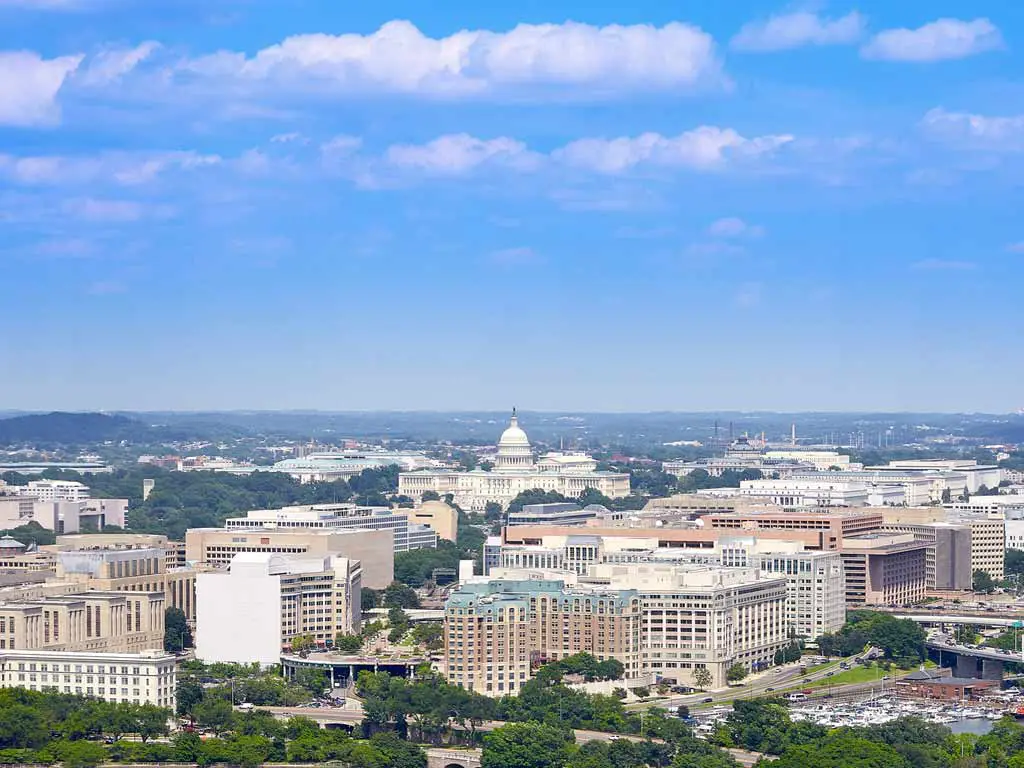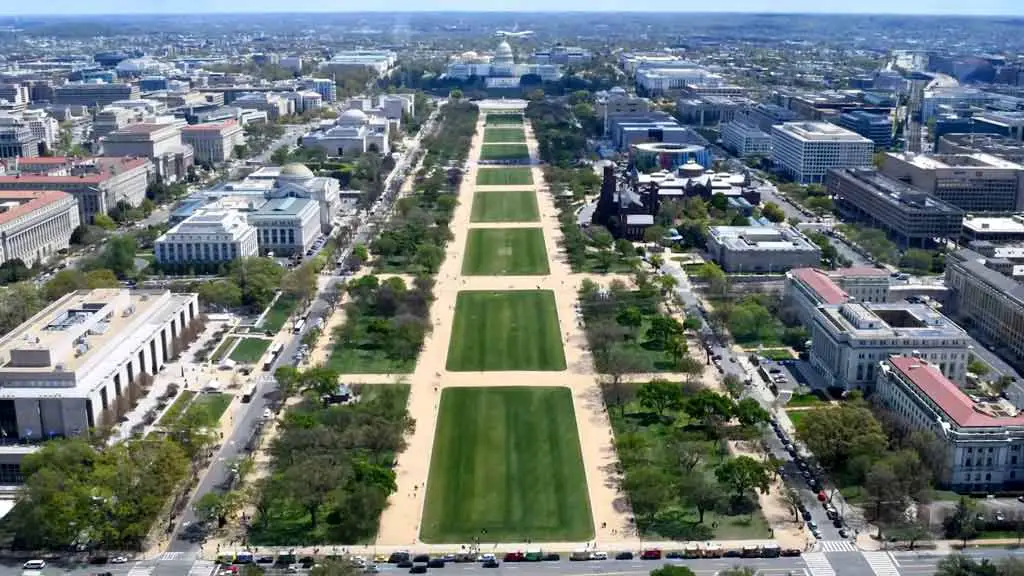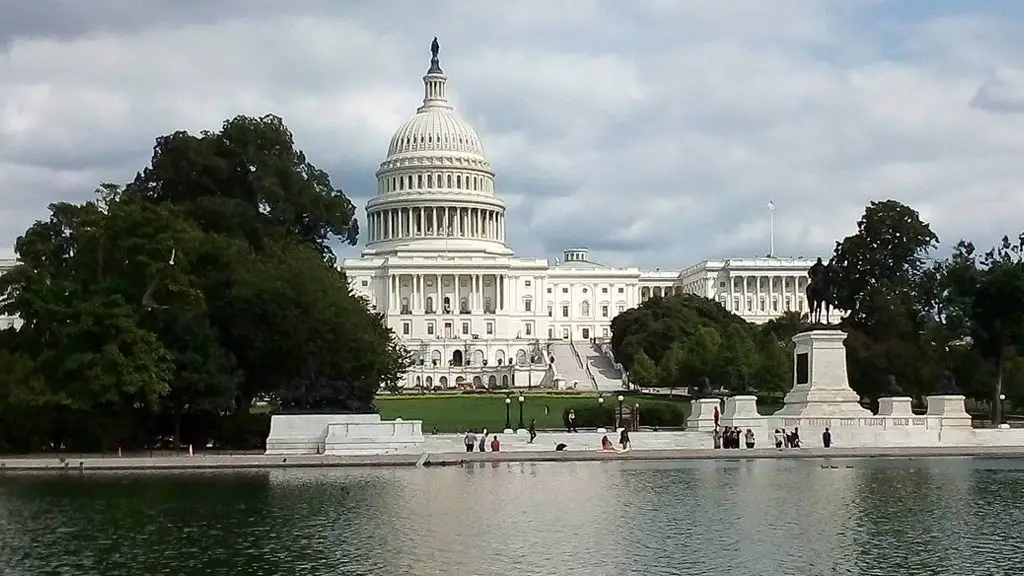Washington D.C., the capital of the United States, is known for its iconic monuments and historical landmarks. However, one notable feature missing from its skyline is towering skyscrapers.
Unlike other major cities, Washington D.C. has strict building height restrictions in place. These regulations, set by the Height of Buildings Act of 1910, limit the height of structures to ensure that the U.S. Capitol remains the tallest building in the city.
The absence of tall buildings in Washington D.C. is a deliberate design choice that preserves the city’s unique aesthetic and maintains the prominence of its architectural symbols.
While some argue that taller structures could provide more space and modernize the city’s skyline, the current regulations reflect a commitment to preserving the historical and cultural significance of the nation’s capital.

Background of Building Height Regulations in Washington D.C.
The Height of Buildings Act of 1910 limits building heights in Washington D.C., preserving its iconic skyline and historical landmarks.
The Height of Buildings Act of 1910
The Height of Buildings Act of 1910, enacted by Congress, restricts the height of buildings in Washington D.C. to ensure that no structure surpasses the width of the adjacent street.
This legislation was a response to concerns about light and air, and it aimed to preserve the city’s iconic skyline and prevent overshadowing of public spaces. These regulations have successfully maintained the city’s historical charm and architectural integrity.
By preventing excessively tall buildings, Washington D.C. has been able to safeguard its open feel and ensure a visually appealing cityscape for residents and visitors alike.
Zoning Laws and Urban Planning
Apart from the Height of Buildings Act of 1910, Washington D.C. also implements stringent zoning laws and urban planning regulations. These laws dictate the use of land within the city, ensuring that building heights correspond with the character of different neighborhoods.
Zoning ordinances play a crucial role in maintaining the city’s architectural integrity and balancing economic development with historical preservation.
Impact of Historical Preservation on D.C.’s Skyline

The National Capital Planning Commission (NCPC) significantly influences Washington D.C.’s skyline through its oversight of urban planning and development projects.
The NCPC plays a key role in ensuring that new constructions adhere to the city’s aesthetic and historical preservation guidelines.
The Role of the National Capital Planning Commission
The NCPC, established in 1924, reviews and approves federal and private development projects in the D.C. area. This commission evaluates proposed structures to maintain the city’s unique architectural character while preserving historical landmarks and views.
By carefully regulating building heights and designs, the NCPC safeguards Washington D.C.’s iconic skyline. Additionally, the Height of Buildings Act of 1910 restricts the height of structures in D.C. to be no taller than the width of the adjacent street plus 20 feet.
This further contributes to the lack of tall buildings in the city and ensures the preservation of its low-rise aesthetic.
Protection of Iconic Monuments and Views
Washington D.C. boasts numerous iconic landmarks and monuments that contribute to its distinctive skyline. The NCPC prioritizes the protection of these historic sites and ensures that new developments do not obstruct views of these important structures.
By preserving sightlines to monuments like the Capitol Building and the Washington Monument, the NCPC maintains the city’s historical legacy while allowing for controlled urban growth.
Common Myths About Building Heights in D.C.
Misconceptions about building heights in D.C. often revolve around outdated laws and their impact on skyline preservation, sparking debate on modern urban development needs.
The Capitol Building Height Myth

The myth surrounding the height of buildings in Washington D.C. often includes misconceptions about the specific restrictions imposed solely on the Capitol Building’s height.
While it is true that the Height of Buildings Act of 1910 and subsequent zoning regulations limit the overall building heights in the city, these restrictions apply city-wide and are not unique to the Capitol Building.
Misinterpretations of Historical Laws
Many people misinterpret historical laws related to building heights in Washington D.C., often assuming that these regulations are outdated and rigid.
However, it is crucial to understand that these laws have evolved over time to balance urban development with the preservation of the city’s iconic landmarks and historical character.
The strict zoning laws and urban planning regulations are not arbitrary but rather instrumental in maintaining the architectural integrity and aesthetics of the nation’s capital.
Proposed Changes and Future Outlook
In the realm of building regulations in Washington D.C., there have been ongoing discussions about potential revisions to the Height of Buildings Act of 1910 to accommodate modern urban development needs while preserving the city’s historical character and skyline.
Advocacy for Policy Revisions
Advocates for policy revisions argue that updating the Height of Buildings Act of 1910 could stimulate economic growth, attract new businesses, and provide additional housing options in the city.
By allowing for taller buildings, D.C. could potentially address housing shortages and promote sustainable urban development practices.
Increasing building height limits in Washington D.C. would also help the city capitalize on its valuable real estate, potentially increasing property values and generating more revenue for the local government.
Potential Impacts on Urban Development
If policy revisions were to be implemented, the urban development landscape in Washington D.C. could undergo significant changes. Taller buildings might offer increased commercial and residential space, potentially leading to a more diverse and vibrant cityscape.
However, careful consideration would be required to ensure that any changes align with the city’s architectural heritage and iconic skyline.
Introducing taller buildings in Washington D.C. could bring about a notable transformation in its urban environment, offering enhanced opportunities for both commercial and residential purposes.
It is crucial to balance this advancement with preserving the city’s historical architectural significance and iconic skyline.
Frequently Asked Questions
Does the Height of Buildings Act of 1910 restrict building heights in Washington D.C.?
Yes, the Height of Buildings Act of 1910 places a height restriction of 130 feet on new buildings constructed in Washington D.C. This restriction aims to preserve the city’s unique skyline and historical aesthetic.
What role does the National Capital Planning Commission play in relation to building heights in Washington D.C.?
The National Capital Planning Commission serves to safeguard historical landmarks and views in Washington D.C. It plays a crucial role in maintaining the balance between urban development and historical preservation within the city.
How could potential revisions to the Height of Buildings Act impact Washington D.C.?
Potential revisions to the Height of Buildings Act could lead to increased commercial and residential space in Washington D.C. This could potentially reshape the cityscape while conserving its architectural heritage and iconic skyline.
What are the goals of advocates pushing for updates to the Height of Buildings Act?
Advocates seeking updates to the Height of Buildings Act aim to boost economic growth, attract businesses, and address housing shortages in Washington D.C.
They believe that modernizing the act can help create a vibrant and sustainable urban environment that honors the city’s rich history and cultural legacy.
Conclusion
The potential revisions to the Height of Buildings Act of 1910 in Washington D.C. are sparking debates on modernizing urban development while honoring the city’s historical significance.
Advocates argue that updating the act could foster economic growth, attract businesses, and alleviate housing shortages in the region.
The proposed policy changes may result in increased commercial and residential space, reshaping the city’s skyline while preserving its architectural heritage and iconic views.
Discussions surrounding the act reflect a delicate balance between progress and conservation, aiming to create a vibrant and sustainable urban environment that respects Washington D.C.’s rich history and cultural legacy.
Modernizing the act could bring economic growth, attract businesses, and alleviate housing shortages in the region, potentially reshaping the city’s skyline while preserving its architectural heritage and iconic views.




Allison Brice